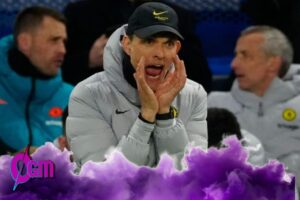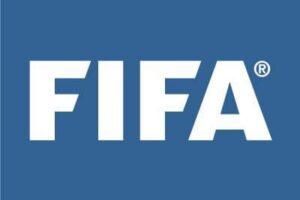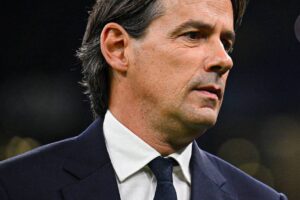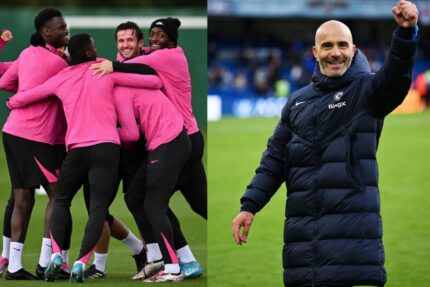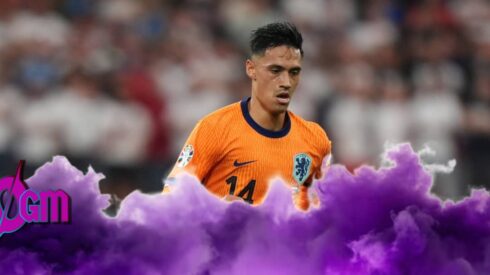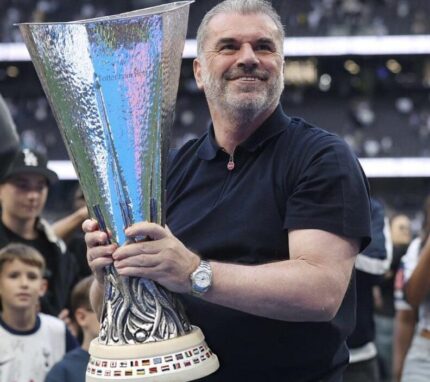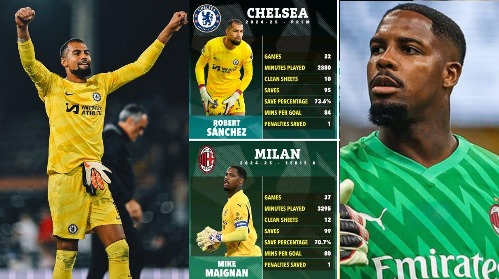Before Chelsea’s Friday night fixture against Brighton, manager Enzo Maresca admitted that his team needed “to find something different” in attack due to a lack of an available centre-forward. However, after a dismal 3-0 defeat in which the Blues failed to register a single shot on target, the Italian is still left searching for solutions.
Since the Clearlake Capital and Todd Boehly takeover less than three years ago, Chelsea have spent over £1.5bn on new signings. Despite this staggering investment, injuries and suspensions have exposed a glaring weakness in their squad—an absence of a reliable striker. How did Chelsea end up in this situation, and what can they do to solve their attacking woes?
More Than £1.5bn Spent – So Where Are the Strikers?
Since Boehly’s ownership began, Chelsea have spent an astonishing £445m on attacking players, yet they still lack a proven centre-forward. While some big-money signings have excelled, none of them have been an out-and-out striker capable of leading the line effectively.
Nicolas Jackson, signed for £32m, remains the only recognized number nine in the squad but is currently sidelined with injury. Chelsea’s other signings, including Christopher Nkunku, Raheem Sterling, Mykhailo Mudryk, and Pedro Neto, are primarily wingers or attacking midfielders rather than traditional strikers. Joao Felix, who initially joined on an expensive £10m loan, was later re-signed permanently for £45m but was swiftly loaned out to AC Milan.
Chelsea also gambled on youth, acquiring David Datro Fofana, Deivid Washington, and Marc Guiu for a combined £34m. However, none have shown they are ready for the demands of the Premier League. The failure to sign an established, elite striker has left Maresca desperately short of options up front.
Who Is Available in Attack?
Chelsea’s attacking crisis worsened after Jackson suffered a hamstring injury, ruling him out for at least six weeks. Adding to the misery, 19-year-old striker Marc Guiu—who has yet to start a Premier League game—also picked up a groin injury and will be sidelined for an extended period.
Meanwhile, Mykhailo Mudryk has been suspended following reports of a positive test for a banned substance, further depleting Chelsea’s attacking depth. To make matters worse, Noni Madueke limped off with a suspected hamstring injury against Brighton, leaving Maresca with just three fit attacking players—Cole Palmer, Pedro Neto, and Jadon Sancho.
With academy prospect Tyrique George the only other forward option available, Chelsea find themselves in a dire situation. The lack of experienced alternatives has forced Maresca to experiment with different tactical setups, but so far, none have proven effective.
Maresca’s Tactical Adjustments – Have They Worked?
Faced with an injury crisis, Maresca attempted to shift his attacking strategy, moving Nkunku away from the central striker role after the Frenchman struggled in the FA Cup against Brighton. Instead, he placed Palmer in a more central role, hoping his creativity would unlock the opposition defense.
However, Chelsea’s attacking problems were compounded by Madueke’s injury, leaving Neto as the only forward capable of making runs behind the defense. As a result, Chelsea dominated possession—completing 648 passes with 69.4% possession—but failed to create clear-cut chances. Brighton goalkeeper Bart Verbruggen did not have a single save to make.
Maresca admitted the difficulty of playing without a proper number nine, stating, “This is the worst moment since I arrived, but we are still there and need to finish in the best way.” Unless Chelsea can find a quick solution, their attack will continue to struggle in crucial games.
Palmer’s Form – Is He Struggling Under the Pressure?
Cole Palmer has been Chelsea’s standout performer this season, contributing to a league-high 39 goals (26 goals, 13 assists) in 2024. However, he has now failed to score in four consecutive Premier League matches—the longest drought of his Chelsea career.
Despite his recent dip in form, Palmer remains central to Maresca’s tactical plans. The manager described him as “more of a linking player”, using him in a deeper role to facilitate attacks. However, without a proper striker ahead of him, Palmer has struggled to influence games as effectively as before. His passing map against Brighton highlighted his constant movement across the frontline, but he cut a frustrated figure for much of the match.
Maresca defended Palmer’s recent performances, stating, “Football is a team game, not tennis. It’s not just about Cole Palmer. We are all in this together.” However, unless Chelsea find a way to provide him with better support in attack, his influence could continue to decline.
What Next for Chelsea?
With no fit strikers available and key attacking players sidelined, Chelsea face a challenging period ahead. Their best short-term option may be to push Nkunku back into the central role and hope he rediscovers his scoring touch. Alternatively, the club could turn to the transfer market in search of an emergency signing.
Regardless of their next move, Chelsea’s ongoing struggles highlight a deeper issue—their failure to sign a reliable, world-class striker despite spending over £1.5bn on new players. If they do not address this problem soon, their aspirations for a successful season could quickly unravel.


